Have you ever wanted to make your own homemade sourdough bread, but felt overwhelmed by all the steps and tools? I felt the same way the first time I tried to bake a loaf of bread from scratch. But let me tell you, this easy artisan sourdough bread recipe is the perfect recipe for beginner bakers who want amazing flavor and texture without the hard work of kneading.
The perfect recipe for beginners using simple ingredients and minimal effort.
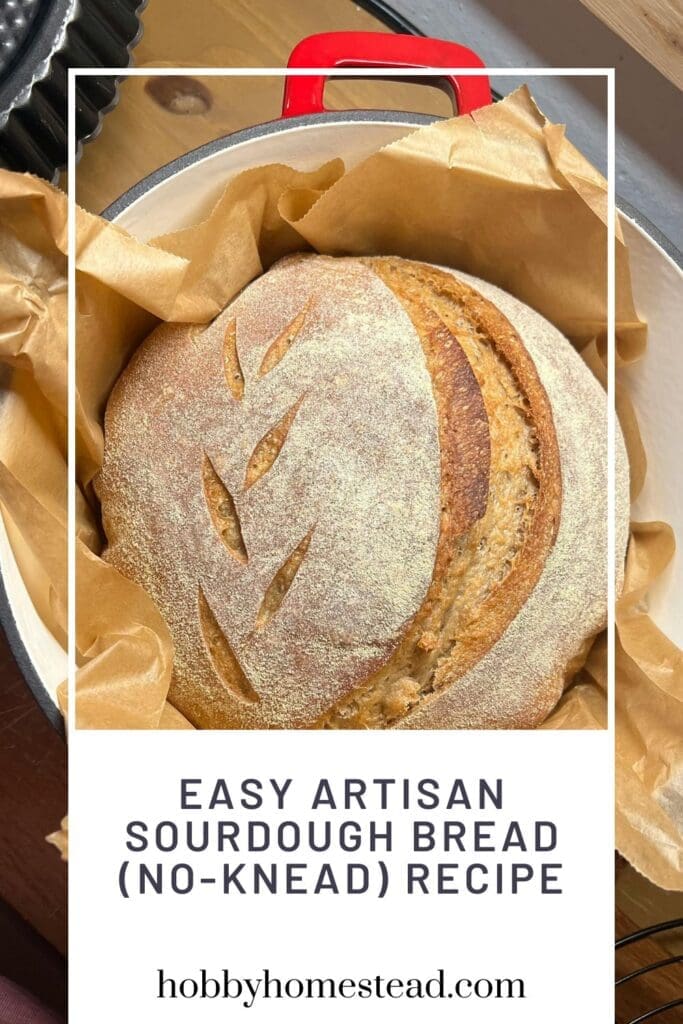
No-Knead Sourdough Bread
This no-knead sourdough bread has a chewy texture, a golden brown crispy crust, and a light, airy crumb. All thanks to the magic of wild yeast in your active sourdough starter and a long fermentation process. Best of all, the process is simple and forgiving. A great way to learn to bake real bread at home.
🍞 Why This Is the Easiest Way to Bake Artisan Sourdough
- No kneading required. Just sets of stretch and folds
- Only simple ingredients like flour, water, salt, and sourdough starter
- Made in a Dutch oven for amazing oven spring and a beautiful crust
- Excellent for baking the next day after an overnight bulk fermentation
- Perfect for those using their own sourdough starter
- This recipe uses ingredients you likely already have in your pantry.
Easy Artisan Sourdough Bread (No-Knead) Recipe
As an Amazon Associate I earn from qualifying purchases.
Ingredients
- 100 g active sourdough starter not discard, about 1/2 cup, our recipe for the sourdough starter
- 375 g warm water about 1 1/2 cups plus 1 tablespoon
- 450 g bread flour or all-purpose flour, about 3 1/2 cups
- 50 g whole wheat flour about 1/3 cup
- 10 g salt about 1 1/2 teaspoons
- Optional: a drizzle of olive oil for your bowl
Instructions
- Mix the Dough. In a large mixing bowl, whisk together your active starter and warm water until cloudy. Add your flours and salt. Stir with a wooden spoon or your wet hands until a shaggy dough forms. Cover loosely with plastic wrap or a damp kitchen towel and let the dough rest for 30 minutes. This step helps hydrate the flour and begin gluten development without kneading.100 g active sourdough starter, 375 g warm water, 450 g bread flour, 50 g whole wheat flour, 10 g salt
- Stretch and Fold. Over the next 2 hours, perform 3–4 sets of stretch and folds, spaced 30–45 minutes apart. Use wet hands to lift one side of the dough and fold it over. Rotate the bowl a quarter turn and repeat. This builds strength and surface tension in the dough.Optional: a drizzle of olive oil for your bowl
- Bulk Fermentation. Cover the bowl and let it sit at room temperature for 8–12 hours, or until the top of the dough has a nice rise and passes the poke test (a dent springs back slowly). The amount of starter, your room temp, and flour type affect fermentation time. You’ll notice the dough becomes bubbly and elastic as the good bacteria, lactic acid bacteria, and wild yeast do their job.
- Shape the Dough. Dust a surface and your hands with a little flour. Gently remove the dough from the bowl using a bench scraper. Shape into a round, seam-side down. Place into a proofing basket dusted with flour (or use a towel-lined bowl). Cover and let the dough rise a second time for 1–2 hours.
- Preheat and Score. About 30 minutes before baking, preheat your oven to 450°F with your Dutch oven inside. Turn the risen dough out onto a piece of parchment paper. Use a razor blade or sharp knife to score the dough for a good oven spring.
- Bake Your Bread. Carefully place the dough (with parchment) into the hot Dutch oven. Cover and bake for 20 minutes. Then remove the lid and bake another 25–30 minutes, or until the crust is golden brown and the internal temperature reads around 205°F.
- Cool and Enjoy. Let the homemade bread cool completely on a cooling rack to finish the fermentation process and avoid a gummy interior. Slice, admire your first loaf, and enjoy the fresh bread you made with minimal effort.
Notes
Weighing Ingredients
While baking sourdough by weight yields the most accurate and consistent results (and helps with hydration levels and fermentation), many home bakers. Especially beginners may be more familiar with cups and teaspoons. Therefore, we’ve included both metric weights and volume estimates improves accessibility, encourages readers to try the recipe, and increases engagement. Note: All measurements are listed by weight first, which is recommended for best results when baking sourdough. Approximate cup conversions are included for convenience.⏱ Time Estimates for the Recipe Card
- Prep Time: 25 minutes
(Mixing dough + stretch and folds) - Resting/Rising Time: 12–18 hours
(Includes bulk fermentation, dough rest, and second rise — you can break this out more if your card allows) - Baking Time: 45–55 minutes
(20 minutes covered, 25–30 minutes uncovered) - Total Time: 13–19 hours
(Depending on your ambient temperature and fermentation time — helpful to note that most is hands-off) - Most of the time required is hands-off during fermentation or baking.
- Start this recipe in the evening and bake the next day for best results.
🍽 Servings
- Servings: 1 loaf (about 12 slices)
(You could also say “Makes 1 medium artisan sourdough loaf”)
Nutrition
Helpful Tips for Beginner Sourdough Bakers
- Use the float test to check if your starter is ready.
- Don’t be afraid of high hydration dough — it’s sticky but yields a great chewy texture.
- If your dough spreads too much, try using a proofing basket next time.
- Want to bake with discard? Check out my favorite sourdough discard recipes too!
- Store leftover bread wrapped in beeswax or a clean tea towel to keep the crust crisp.
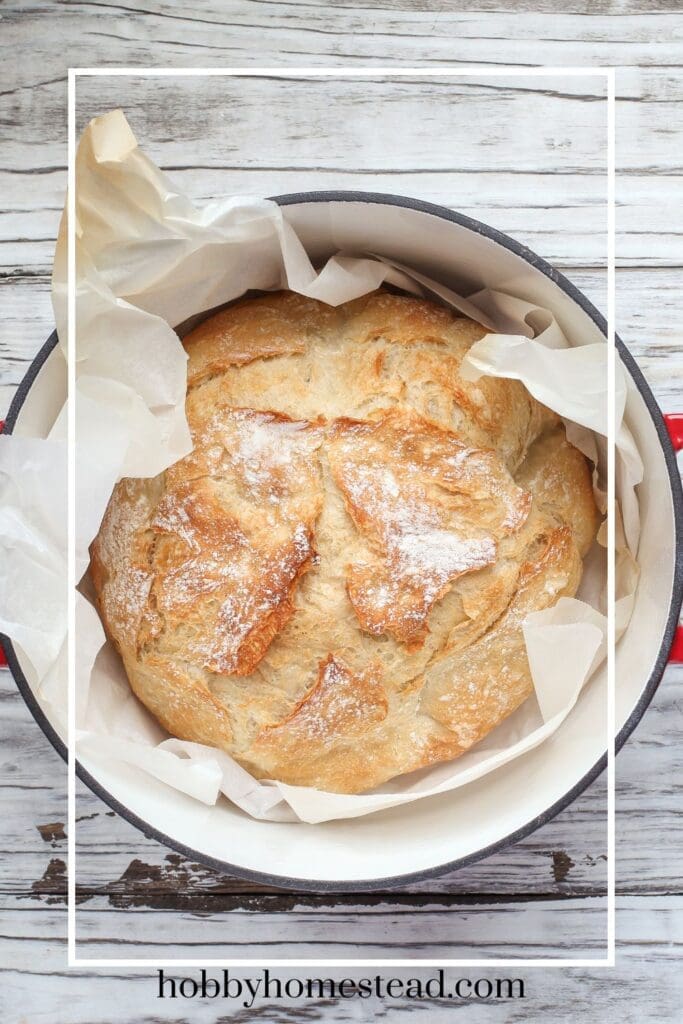
Tools You’ll Need
- Large mixing bowl or large bowl for mixing
- Wooden spoon or dough scraper
- Kitchen scale (for best results)
- Plastic wrap, damp kitchen towel, or tea towel
- Dutch oven with lid
- Parchment paper
- Razor blade or sharp knife for scoring
- Proofing basket (optional, but helpful)
- Bench scraper (optional)
Can I use commercial yeast with this recipe?
This recipe is designed to rely only on your wild yeast, but you could try adding a pinch of instant yeast if your starter is sluggish.
What flour is best?
A mix of white bread flour and whole wheat flour gives great structure and flavor, but you can try all-purpose or white flour in a pinch.
How is this different from kneading sourdough bread?
This no-knead method uses stretch and folds instead of kneading, making it easier and perfect for busy schedules.
Is sourdough healthier than white bread?
Yes! The lactic acid bacteria help break down phytic acid, making nutrients more bioavailable.
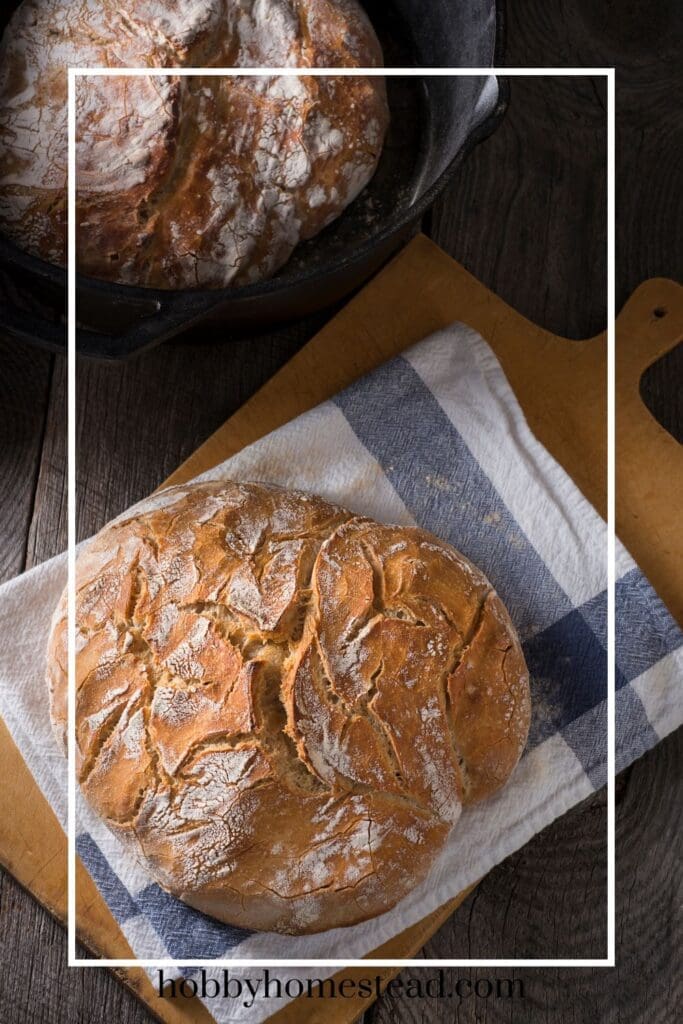
🍞 Ready to Bake?
There’s something magical about turning just flour, water, and salt into a beautiful, artisan sourdough bread with a crispy crust and rich flavor. Whether it’s your first time or your second time, I hope this recipe helps you gain confidence in the kitchen.


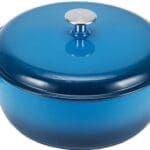
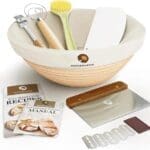
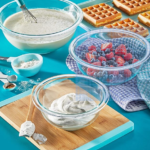
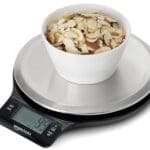
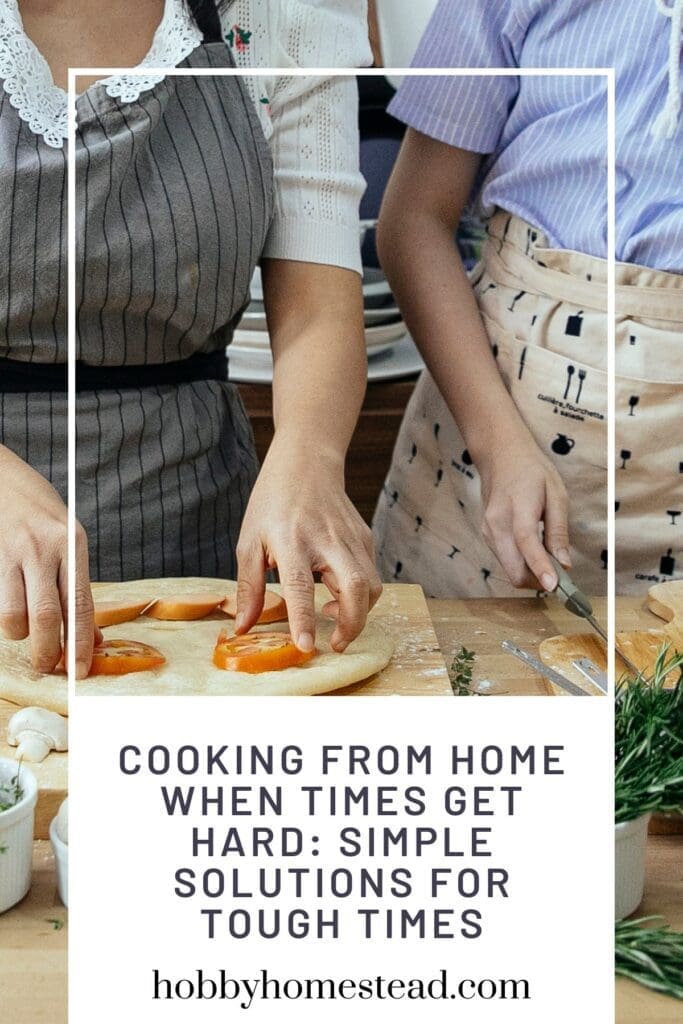

It takes a while but the end result is delicious.